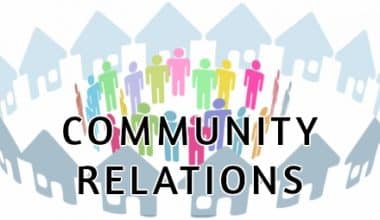Each of us has witnessed a leader who lost control of their actions. They hold power with an iron hand and think they have the right to do so because of their position. In the short term, these leaders may be successful in forcing their will on their workers. But over time, this management approach results in decreasing employee engagement, which is detrimental to the company. A great leader is aware of the different types of power in government leadership and is skilled at combining them with persuasion strategies. They are aware that doing this will produce the best results. In this post, the different types of power in government leadership will be discussed. We’ll also talk about various types of power of attorney and referent power.
What is Power?
The ability to perform specific actions or impose your will on others is the definition of power. But in a professional setting, different people have various ideas about what power is.
Some individuals believe that power comes from an outside source. This could be a title or position that has been given to someone and provides them power and control over others. Others hold the opinion that power is an innate trait that may be developed inwardly and displayed externally. In this way, when a person matures, their strength increases.
Internal and external power work together to create true power. This implies that regardless of their place within the hierarchy, anybody can access a certain level of power.
Types of Power in Leadership
Managers can assist their teams in achieving shared objectives thanks to their leadership power. Depending on their position, nature, and level of expertise, individuals may hold several types of power leadership in the government. You can discover more about your existing or projected management style by researching various types of power in government leadership. This will help you be more prepared to inform, inspire, and influence your team.
Different Types of Leadership in Government
A leader motivates followers to take action, and the power of leadership enables them to have an impact on their teams. In government leadership, effective leaders can foster teamwork, personal development, and a healthy workplace environment. Here are nine common types of power in government leadership:
#1. Legitimate power
Hierarchy leads to legitimate power in an organization. Employees are susceptible to the influence of leaders who hold positions of authority. Having a military rank is an illustration of legitimate power. The direction of their commanding officer and other senior authorities is obeyed by all lower-ranking individuals. This organization-preserving structure guarantees that everyone is working toward the same objectives.
#2. Coercive power
Power obtained through threat or use of force is known as coercive power. A coercive leader might, for instance, make a lower-ranking employee complete assignments or face disciplinary action. When a team member defies the rules, managers can use this kind of authority to help the individual change their behavior and increase their productivity.
#3. Referent power
The power that role models possess is known as referent power. It happens when a leader has excellent people skills and others follow them because they find the leader to be motivating. For instance, when a worker wants to settle a dispute, he or she looks to what their mentor may do and adopts that strategy.
#4. Charismatic power
The quality of attractiveness or charm that inspires others to follow someone is known as charisma. Positive and happy emotions are transmitted to others by charismatic power. The persuasiveness of this power depends on how likable the leader is on a personal level. This power relies on an established, well-rounded leadership style that may bring about significant change rather than a planned strategy with defined skills or polished leadership attributes.
#5. Expert power
When one employee has skills that others don’t, that employee has expert power inside the organization. As a result, people start to respect the expert. Employees frequently believe that managers and executives have certain abilities or knowledge that others do not, yet everyone within the company is capable of exercising expert power.
#6. Informational power
When someone has information that others don’t, they are in a position of power. As long as the information is kept secret from others, this kind of power endures. Because of this, the individual in possession of the knowledge is in a special position to use this power any way they see fit.
#7. Reward power
Gifts can offer someone the power to shape other people’s behavior. When a manager has the authority to reward staff for their performance, this is known as reward power. Giving raises to staff who achieve the greatest sales figures, for instance, shows reward power.
#8. Moral power
Based on their values and actions, a morally powerful leader motivates followers to take action. Moral leaders model a way of life that others can see and choose to imitate. These leaders inspire their teams because they establish credibility through their moral standards. They develop into a standard-setter for others.
#9. Connection power
When others appreciate and want to be in an alliance with prominent people, leaders have connection power. People are given the impression by the relationship that the leader has access to or possesses the same power as the powerful person. When the leader is connected to potential company investors or network contacts who can advance their careers, this can be advantageous.
Referent Power
There are many types of power in government leadership that a leader may possess. An effective leader is aware of when to employ each sort of power. Every power, whether it be a reward power or a lawful authority, has a purpose. However, there is one kind of power that grants leaders the most sway.
And that’s referent power. But what does leadership referent power mean? And why does referent power have such sway? Let’s examine the significance of understanding referent power and applying it effectively in the job.
What is Referent Power?
The simplest definition of referent power is a sort of power that results from a leader’s capacity to motivate and sway people. This authority derives from how highly people regard, respect, and like a certain leader.
One of many different types of power is referent power. Expert power, coercive power, reward power, and legitimate power are other types of power. The social psychologist’s John French and Bertram Raven first presented these theories of power in 1959.
The two proposed that referent power would generate leadership that would compel and motivate individuals. This leadership power has the potential to turn individuals into devoted followers if it is paired with the correct interpersonal abilities and character traits.
Strong bonds are forged between leaders and their follower’s, thanks to referent power. The way that followers think, act, and express themselves may be imitated to win their leaders’ approval. They view their leader as a sort of example to follow.
The Importance of Referent Power.
Referential power can bring team members together and increase output. It may motivate staff to work together toward a single objective. Here are some other reasons why referent power is essential in every workplace.
#1. Increases the level of trustworthy, pleasant interactions
Referent leaders offer motivation and assistance. They are constantly prepared to offer original responses to problems. As a result, employees experience less stress and worry. Additionally, it reduces task-related ambiguity, which reduces delays and boosts productivity.
#2. Encourages cooperation
Employees who feel comfortable sharing their thoughts might help corporate efforts succeed. Democratic leaders have made it clear to their staff that they are free to voice their viewpoints. Additionally, they will be heard and respected.
#3. Increases motivation and job satisfaction
Respected leaders motivate their team members to fully commit to their roles and obligations. They serve as useful and inspiring role models for their staff. This is accomplished by giving the staff members specific examples of how responsibilities within an organization should be filled.
#4. Enhances worker retention
Leaders that inspire commitment and loyalty in their workforce have much lower attrition rates. This effect has the potential to lower employee turnover and related expenses. All the while assisting an organization with long-term personnel retention.
#5. Motivates staff to be more active and productive
When workers observe their leaders putting in long hours and carrying out their fair share of duties, they are more likely to do the same. Referent leaders motivate their people to continue being engaged and productive at work. They accomplish this by setting an example and always making moral decisions.
How to Use Referent Power
As with any sort of power, you should think about how to make the best use of referent power. Here are some tips for using referent power to encourage, support, and motivate your workers.
- Be truthful
- Be attentive and receptive to fresh ideas.
- Invest in your team
- Recognize excellence
- Practice what you preach
Types of Power Attorney
A power of attorney, often known as a POA, is a legal document that enables you to assign decision-making authority to another person. This person is called your agent or proxy. Even if you are unable to make these decisions for yourself, POAs are effective legal agreements that guarantee crucial decisions regarding your family, finances, and healthcare will be taken care of.
Knowing the many types of power attorney available will enable you to select the one that is most suitable for you. Below, we’ve broken down some of the more popular kinds for you.
#1. A durable power of attorney
If you have a durable power of attorney, your agent can continue to act on your behalf even if you lose the ability to do so, such as if you go into a coma. Because you’re preparing for a scenario in which you might not be able to make decisions on your own, it’s usual for your POA to be durable if you’re using it for estate planning.
Unless you express otherwise, the court will normally assume that a POA is durable in most states. But to avoid any misunderstandings, it’s always a good idea to make it clear in your power of attorney form if you want it to be durable.
#2. Springing power of attorney
A typical power of attorney takes effect right away when you sign it, so your agent may start using the authority you gave them right away. When you use your POA for professional or financial matters, this can be helpful. For instance, if you run a business and relocate abroad, you can choose an agent to run it while you’re gone.
#3. General power of attorney
A general power of attorney gives your agent the freedom to represent you in any situation that is permitted by local law. This covers corporate, legal, financial, and health-related issues. Depending on your selections, general POAs may be durable or not.
#4. Financial power of attorney
A financial POA is categorized as a special or limited power of attorney since it empowers your agent to make decisions on your behalf about a specific range of topics. In this instance, it permits your agent to make choices about your finances and property.
#5. A medical power of attorney
Another kind of special or limited power of attorney is a medical POA, sometimes known as a healthcare power of attorney. It enables your agent to decide on your behalf when it comes to healthcare. This may involve selecting your medical care options, such as:
- Medical treatments
- Medication
- Surgery
- End-of-life care
- The doctors and hospitals used to administer your care
How to Use the Types of Power
Before attempting to use a power, it’s critical to understand it. You can think about how to use each one in the workplace if you have a firm understanding of each one.
- Know your goals: Having a plan is a lot simpler when you are aware of your ultimate goal. The same holds for power structures and leadership philosophies. Understand your goals before assigning tasks or attempting to inspire your staff.
- Know your team: It’s crucial to be aware of who you are talking to and what they value. Async check-ins, 1:1 meetings, casual coffee talks, or more formal employee engagement surveys can all help you get to know your team better.
- Think about your leadership style: Are you a democratic leader who prefers to consult with everyone before making a decision? Or do you adopt a top-down strategy? Try to think of different leadership styles as a strong partnership for effective leadership because they all feed into and support diverse types of power.
- Reflect and revise your approach: Consider your strategy again because you might be quite successful the first time you use a new power. But if it doesn’t work and does not align with your team’s (or your own) ideals, try a different strategy.
What Are the 8 Elements of Power?
A common paradigm for analyzing and comprehending power connections between individuals, groups, and nations is the eight elements of power. These are the eight elements of power:
- Military power
- Economic power
- Diplomatic power
- Informational power
- Technological power
- Cultural power
- Legal power
- Organizational power
What Are the 5 Spiritual Elements?
These are the five spiritual elements:
- Earth
- Water
- Fire
- Air
- Space or Ether
What Are the Six Bases of Power?
As was already noted, social communication research now consistently examines six key themes of power techniques. Coercive, Reward, Legitimate, Referent, Expert, and Informational are the descriptions given for them.
What Are the Six Sources of Power?
The Five Power Sources
- legitimate power.
- Expert power.
- Referent power.
- Coercive power.
- Reward power.
What Are the 6 Forms of Power List?
It was suggested that there are six ways in which people can exert power:
- Legitimate Power.
- Reward Power.
- Referent Power.
- Expert Power.
- Informational Power.
- Coercive Power.
How Many Types of Powers Are There?
These are the five types of power: Reward power. Legitimate power. Expert power. Referent power.
What Is the Most Basic Form of Power?
Physical power is frequently seen as the most fundamental type of power. The ability to use force or violence to further one’s goals is referred to as physical power. This kind of power frequently depends on physical prowess, stature, or weaponry.
Conclusion
Power is a complicated phenomenon that has a big impact on human interactions and communities. Power comes in a wide variety of types and sources, including economic power, political power, cultural power, and more.
Also, power can be used to benefit oneself and forward their interests, but it can also be used to oppress, take advantage of, or injure other people. The exercise of power can also result in opposition, conflict, and unfavorable outcomes.
Understanding various sources of power and how they affect both people and societies is crucial. Individuals and groups can strive toward accomplishing their goals while simultaneously advancing justice, fairness, and human dignity through using power in responsible and ethical ways.
LEGITIMATE CREDIT REPAIR COMPANIES 2023
Can You Get a Credit Card With Your Current Credit Score?
HOW TO MAKE EXTRA MONEY ON THE SIDE: 15 Most Lucrative Side Hustles
REWARD PROGRAMS: Best, Credit Card, Hotel, Airline & Gas Loyalty Programs
https://businessyield.com/bs-investment/401k-matching/






